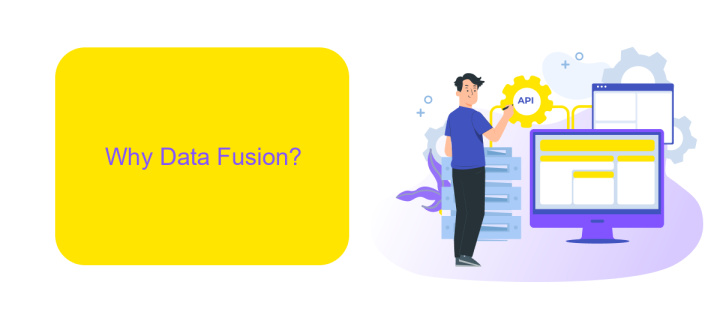Data Fusion ETL
Data Fusion ETL (Extract, Transform, Load) is a powerful process used to aggregate and harmonize data from diverse sources into a unified, actionable format. By leveraging advanced algorithms and machine learning techniques, Data Fusion ETL enhances data quality, facilitates comprehensive analysis, and drives informed decision-making. This article explores the key components, benefits, and implementation strategies of Data Fusion ETL in modern data ecosystems.
ETL with Data Fusion Overview
Data Fusion ETL (Extract, Transform, Load) is a critical process in data management that allows for the seamless integration and transformation of data from multiple sources into a unified view. This process ensures that data is accurate, consistent, and ready for analysis, enabling organizations to make informed decisions based on comprehensive datasets.
- Extraction: Collecting data from various sources such as databases, APIs, and flat files.
- Transformation: Converting extracted data into a suitable format or structure for analysis, which may include cleaning, aggregating, and enriching the data.
- Loading: Inserting the transformed data into a target system, such as a data warehouse or data lake, for further analysis and reporting.
Tools like ApiX-Drive facilitate the ETL process by providing robust integration capabilities, allowing users to connect disparate data sources effortlessly. With ApiX-Drive, organizations can automate data workflows, reducing manual intervention and ensuring that data is always up-to-date and reliable. This enhances the overall efficiency and accuracy of the data fusion process, making it an invaluable asset for data-driven decision-making.
Why Data Fusion?

Data Fusion is a critical process in modern data management, enabling the seamless integration of data from multiple sources into a single, cohesive view. This approach not only improves data quality and consistency but also enhances decision-making by providing a comprehensive and unified dataset. By consolidating disparate data, organizations can uncover hidden patterns, trends, and insights that would otherwise remain obscured in isolated data silos.
One of the key advantages of Data Fusion is its ability to streamline data integration processes using advanced tools and services. For instance, platforms like ApiX-Drive facilitate the automation of data workflows, allowing businesses to connect various applications and data sources effortlessly. With ApiX-Drive, organizations can set up custom integrations without the need for extensive coding, thereby reducing the time and resources required for data consolidation. This not only accelerates the data fusion process but also ensures that the integrated data is accurate, up-to-date, and readily available for analysis.
Data Fusion ETL Features

Data Fusion ETL is a powerful tool designed to streamline the process of extracting, transforming, and loading data from multiple sources into a unified and coherent system. This technology enables organizations to make well-informed decisions by providing a comprehensive view of their data landscape.
- Data Integration: Seamlessly integrates data from various sources, including databases, cloud services, and APIs, ensuring a holistic view of information.
- Data Transformation: Offers robust tools for cleaning, normalizing, and enriching data, making it ready for analysis and reporting.
- Scalability: Easily scales to accommodate growing data volumes and complex data structures, ensuring long-term viability.
- Real-time Processing: Supports real-time data processing, enabling timely insights and decision-making.
- User-friendly Interface: Features an intuitive interface that simplifies the ETL process, making it accessible to users with varying technical expertise.
For organizations looking to streamline their data integration processes, services like ApiX-Drive can be invaluable. ApiX-Drive offers seamless connectivity between various applications and services, automating data transfer and synchronization. This ensures that data is always up-to-date and readily available for analysis, reducing the manual effort and potential for errors.
Data Fusion ETL Use Cases

Data Fusion ETL is a pivotal process in modern data management, enabling organizations to integrate data from disparate sources into a unified view. This process is essential for businesses looking to enhance their decision-making capabilities through comprehensive data analysis.
One of the primary use cases for Data Fusion ETL is in the healthcare industry, where it aids in combining patient data from various systems to create a holistic patient profile. This integration helps in improving patient care and streamlining operations. Another significant use case is in the financial sector, where Data Fusion ETL aggregates data from different financial systems to provide a consolidated view of financial health and performance.
- Integrating customer data for personalized marketing campaigns.
- Combining sales and inventory data for better supply chain management.
- Merging data from IoT devices for comprehensive monitoring and analysis.
- Aggregating social media data for sentiment analysis and brand monitoring.
Services like ApiX-Drive facilitate the Data Fusion ETL process by providing seamless integration between various applications and data sources. By leveraging such tools, businesses can automate data workflows, reduce manual effort, and ensure data consistency across platforms.
Getting Started with Data Fusion ETL
Data Fusion ETL (Extract, Transform, Load) is a critical process for integrating and managing data from multiple sources. To get started, you first need to understand the data sources you will be working with and the specific requirements for your data integration project. Begin by identifying the various data sources, such as databases, APIs, and flat files, and ensure you have the necessary credentials and permissions to access them. Tools like ApiX-Drive can simplify this step by providing a platform to connect and manage multiple data sources seamlessly.
Next, you'll need to design your ETL workflow. This involves defining the extraction process to pull data from your sources, transforming the data into a suitable format, and loading it into your target destination, such as a data warehouse or data lake. Utilize ETL tools and platforms that offer robust features for data transformation and integration. ApiX-Drive, for instance, offers user-friendly interfaces and automation capabilities that can help streamline your ETL processes, making it easier to set up and manage your data pipelines efficiently.
FAQ
What is Data Fusion in ETL?
Why is Data Fusion important in ETL processes?
How can I automate Data Fusion ETL processes?
What challenges are associated with Data Fusion ETL?
Can Data Fusion ETL be applied in real-time data processing?
Routine tasks take a lot of time from employees? Do they burn out, do not have enough working day for the main duties and important things? Do you understand that the only way out of this situation in modern realities is automation? Try Apix-Drive for free and make sure that the online connector in 5 minutes of setting up integration will remove a significant part of the routine from your life and free up time for you and your employees.

